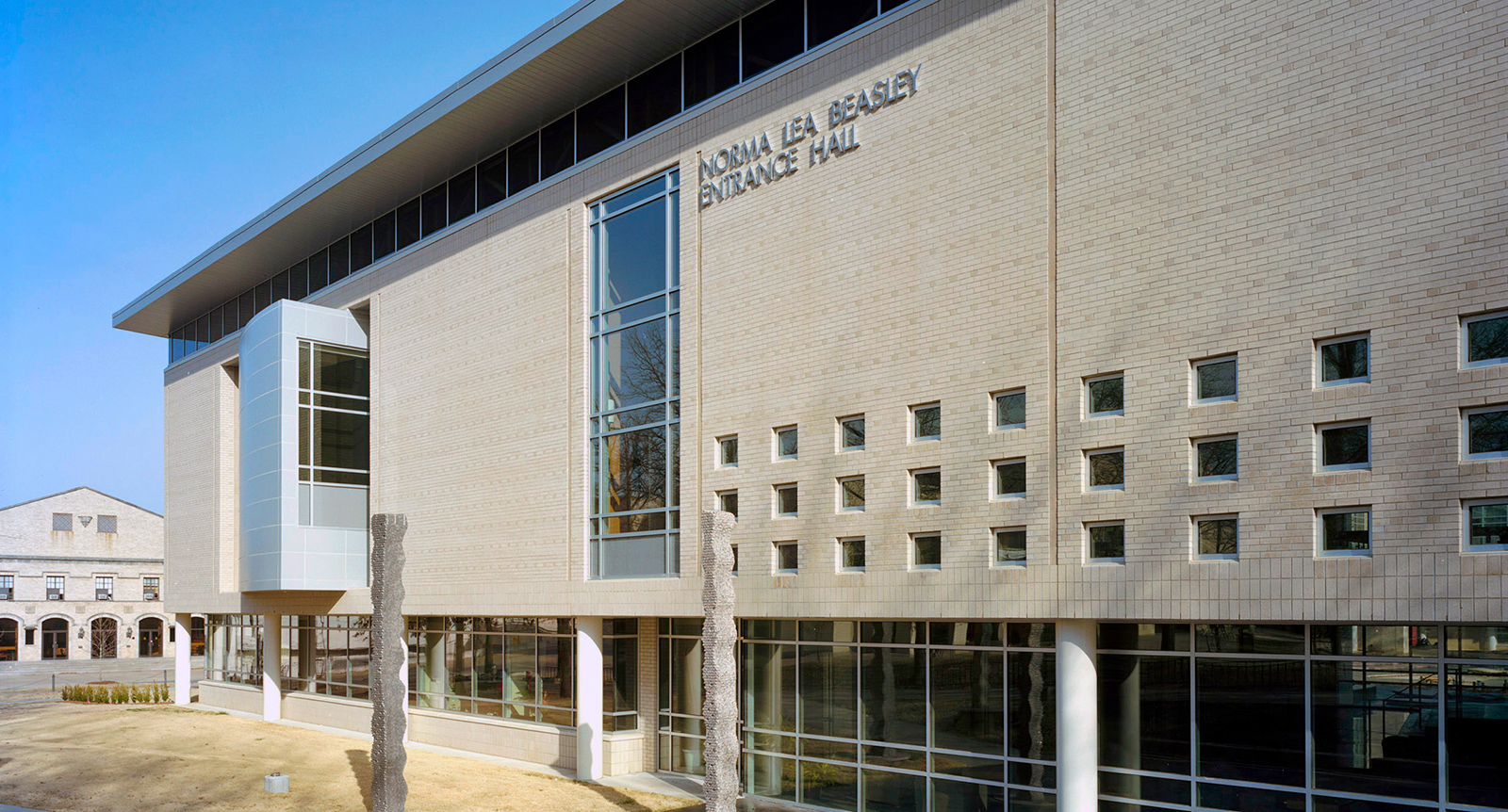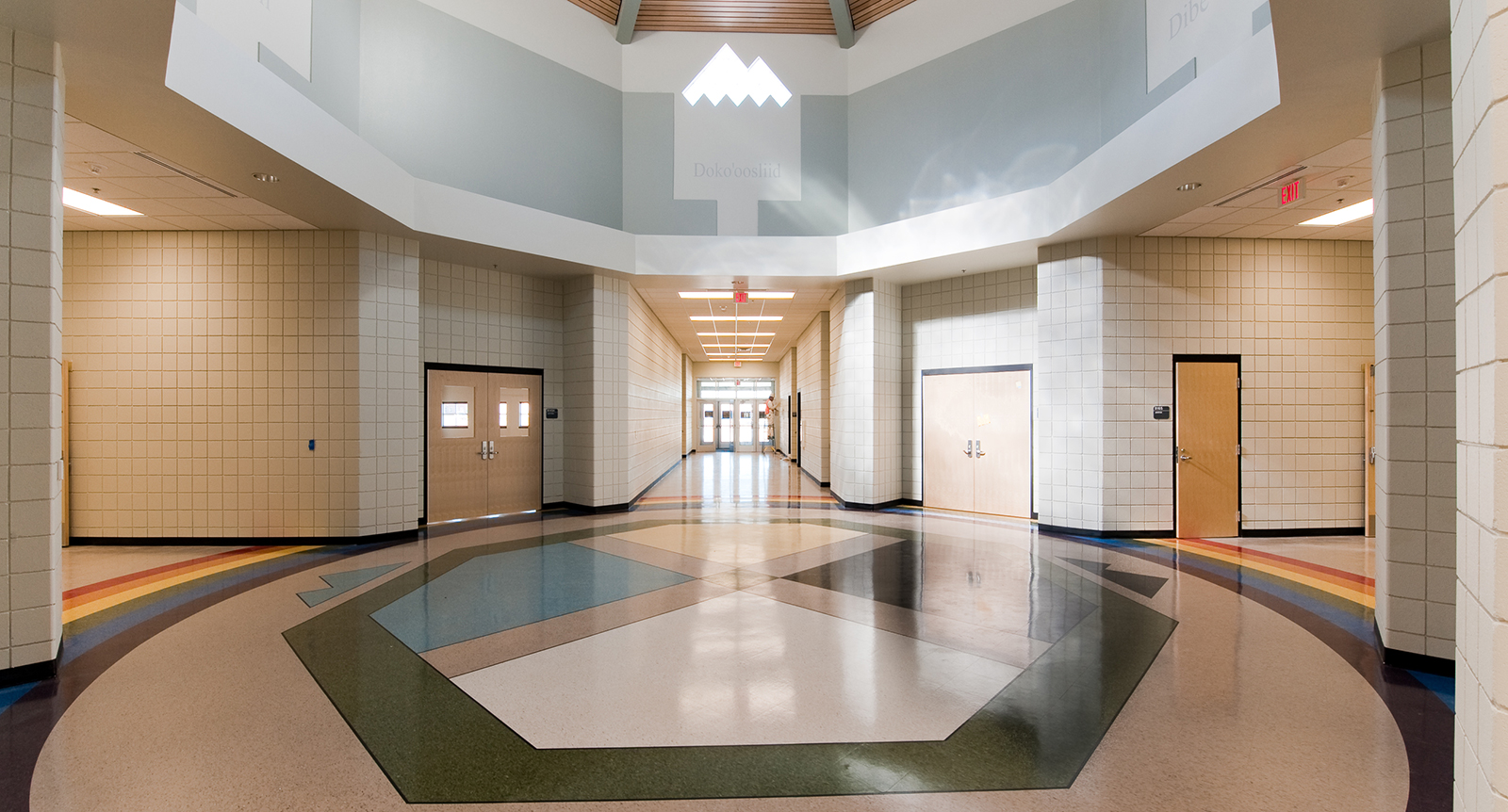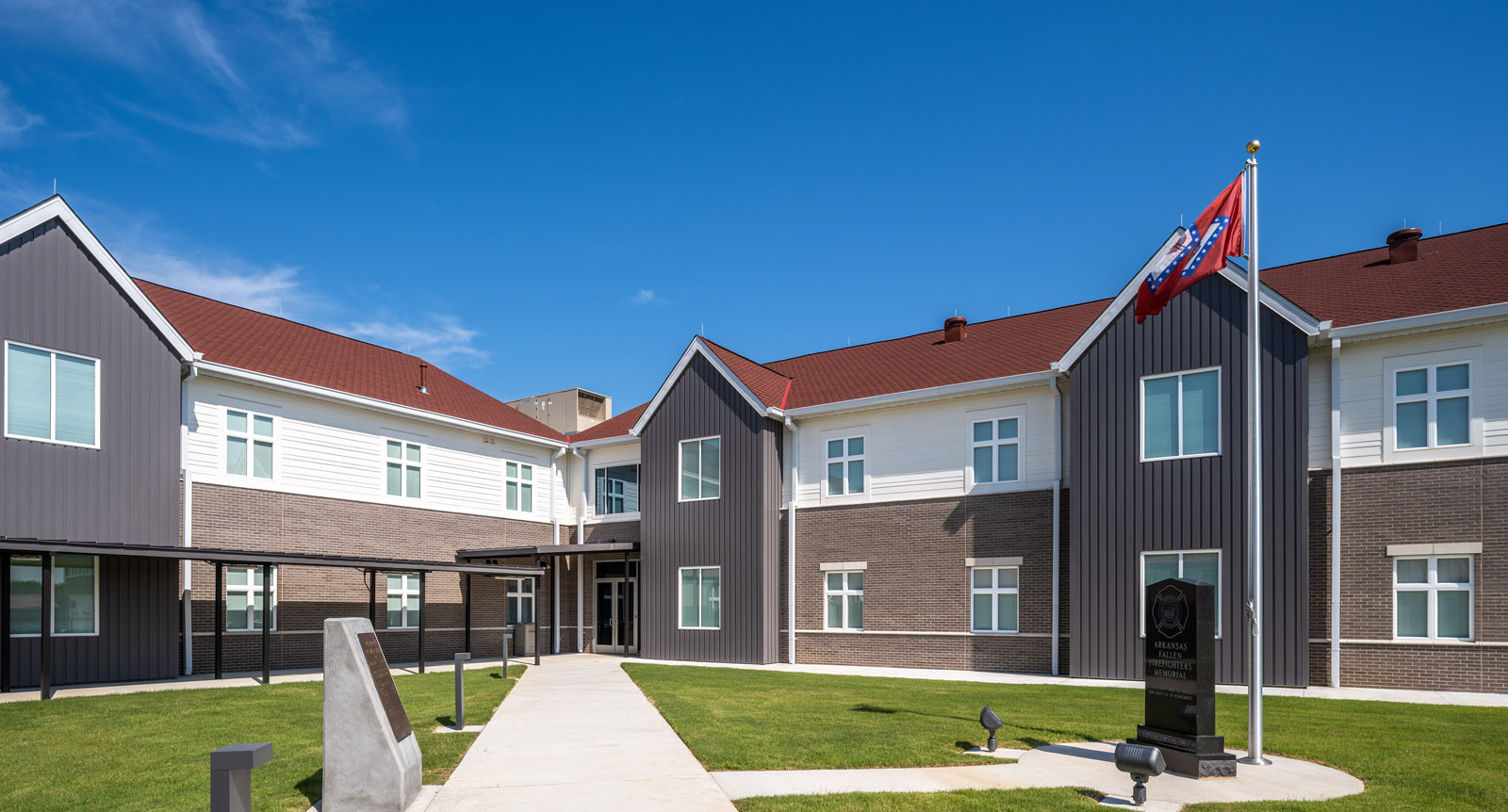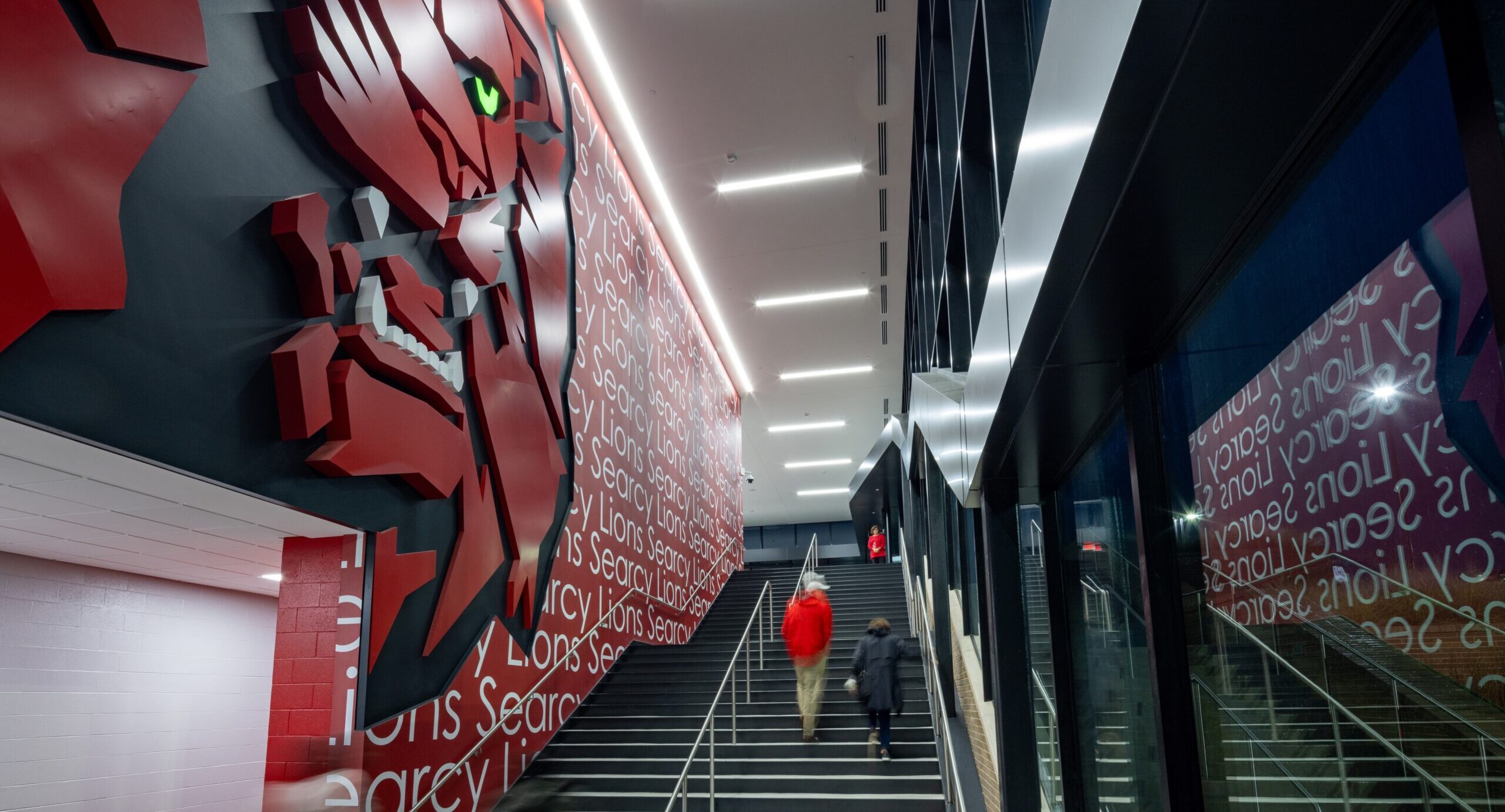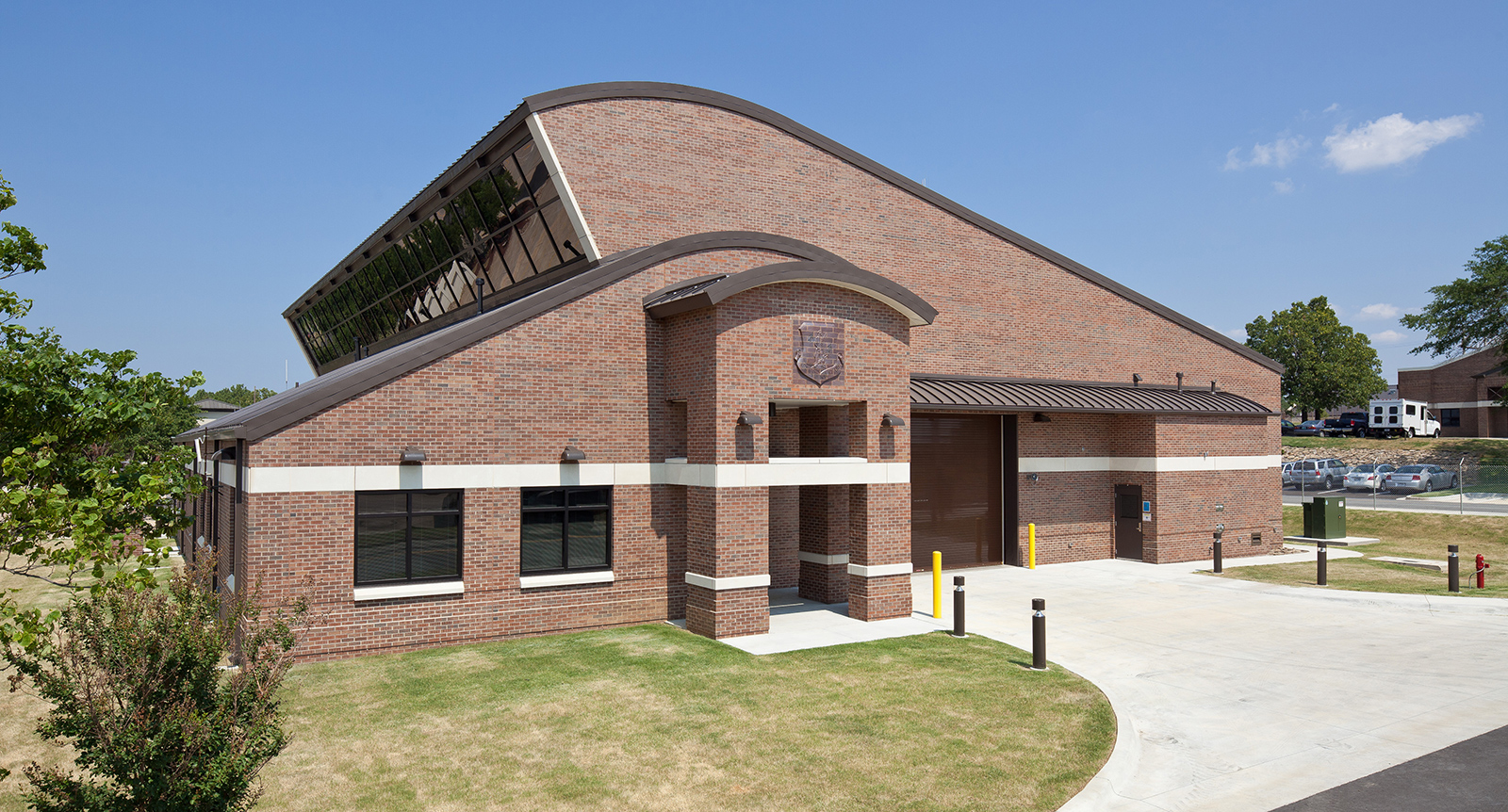The Leflar Law Center building addition has put a new face on the University of Arkansas, re-engaged the University community, and encompassed a theme of openness and accessibility. The project is a multi-level addition to the south side of the existing School of Law on the Main Campus at The University of Arkansas in Fayetteville. The 72,000 SF addition houses a library reading room, classroom and seminar rooms, a 200 seat auditorium and courtroom, a new entry lobby, and faculty and staff offices.
The School of Law building has gone from an eyesore, both physically and symbolically removed from the rest of campus, to one of the University’s most welcoming, striking, vibrant hubs of intellectual exchange.
– Cynthia Nance – Dean Emeritus, School of Law
Size
Services
Architecture
Engineering
Interior Design
Size
Services
Architecture
Engineering
Interior Design
The Leflar Law Center building addition has put a new face on the University of Arkansas, re-engaged the University community, and encompassed a theme of openness and accessibility. The project is a multi-level addition to the south side of the existing School of Law on the Main Campus at The University of Arkansas in Fayetteville. The 72,000 SF addition houses a library reading room, classroom and seminar rooms, a 200 seat auditorium and courtroom, a new entry lobby, and faculty and staff offices.
The School of Law building has gone from an eyesore, both physically and symbolically removed from the rest of campus, to one of the University’s most welcoming, striking, vibrant hubs of intellectual exchange.
– Cynthia Nance – Dean Emeritus, School of Law
The existing building was an accumulation of additions to the original 1950’s era Waterman Hall, built in the International Style. The design, in addition to its symbolic gesture of openness, responds to the architecture of the Fine Arts Building by Edward Durrell Stone, which sits directly across the plaza. The expression of the new addition is forward looking and open, contrary to the formality and traditional design prevalent in most justice oriented buildings.
The exterior volumes of brick and glass express the variety of functions inside the building, while offering a basic bar massing scheme. Deviations from the bar occur at special “events” within the building – the auditorium, library reading room, main lobby, and entry. The design exemplifies the dynamic and ever-changing state of legal education in the United States. With major spaces that open to the campus plaza to the south, the addition re-engages the campus community both physically and figuratively.

